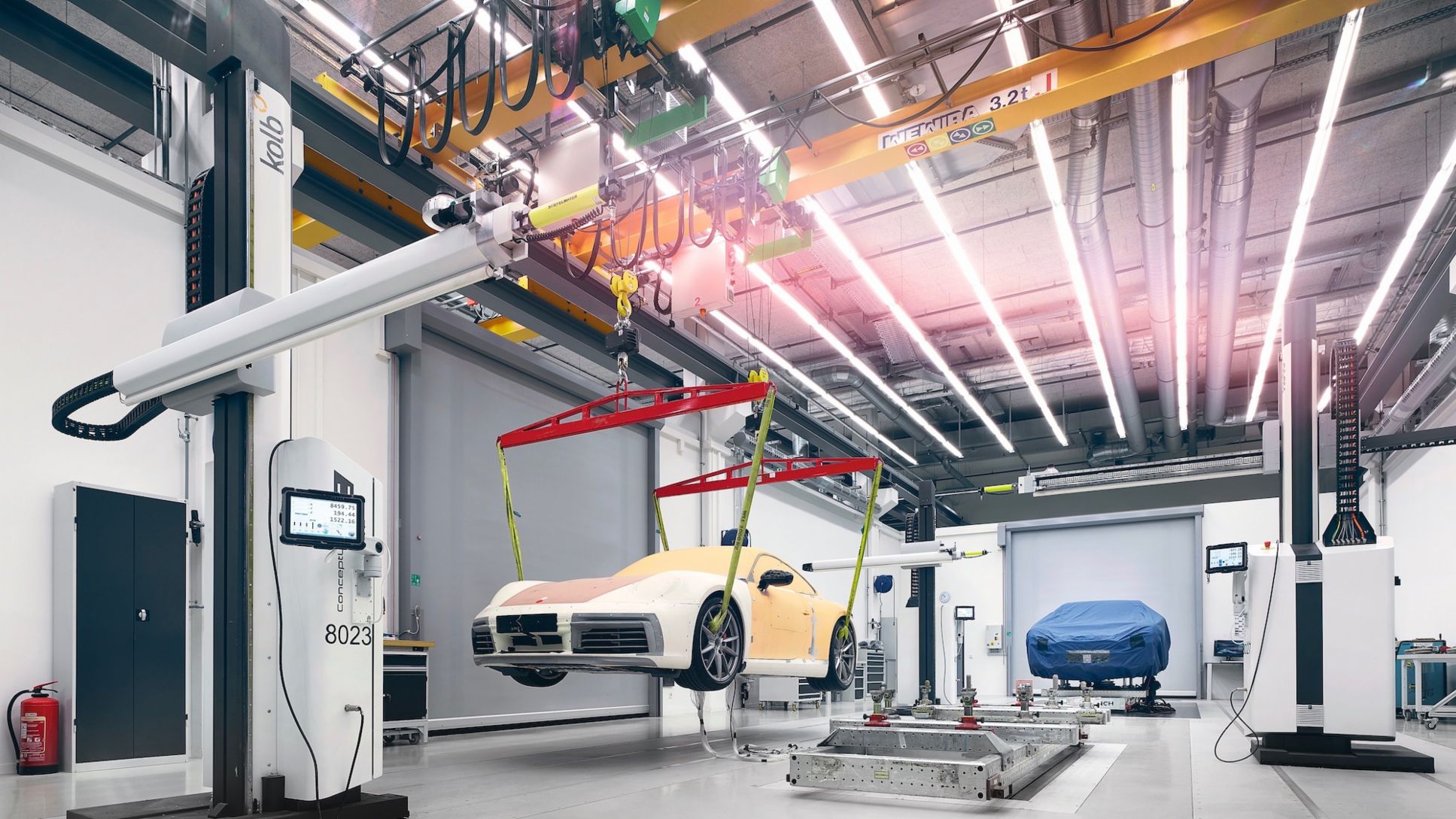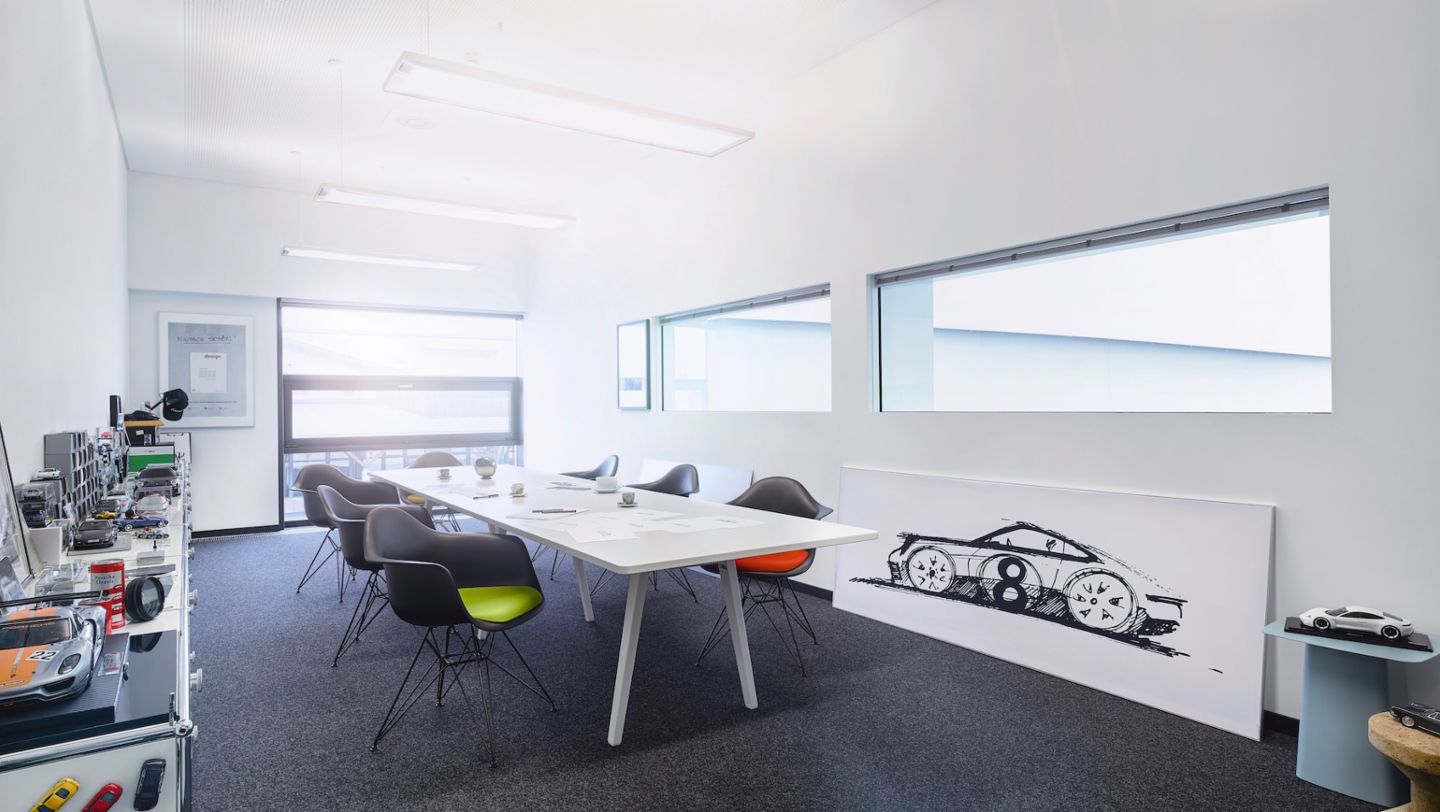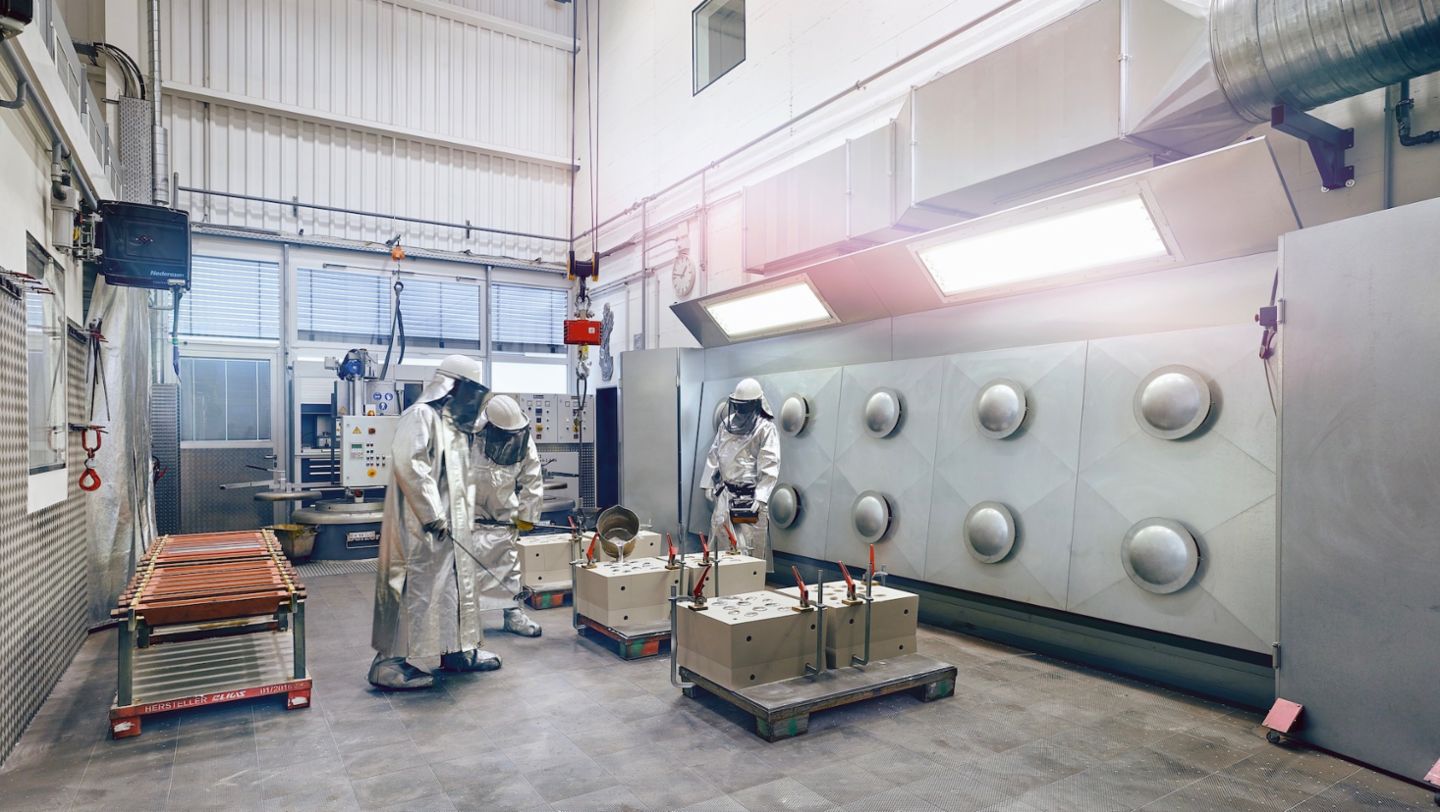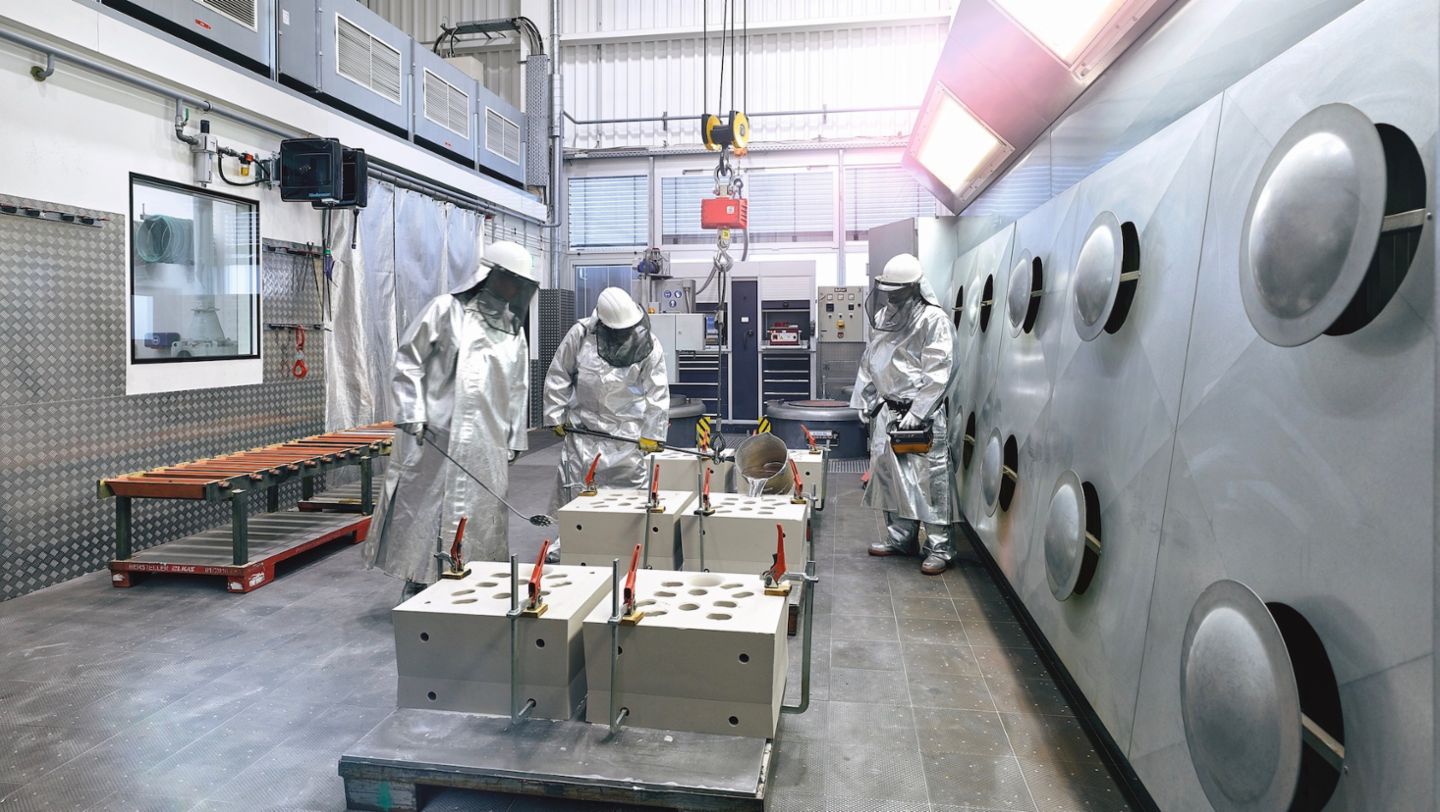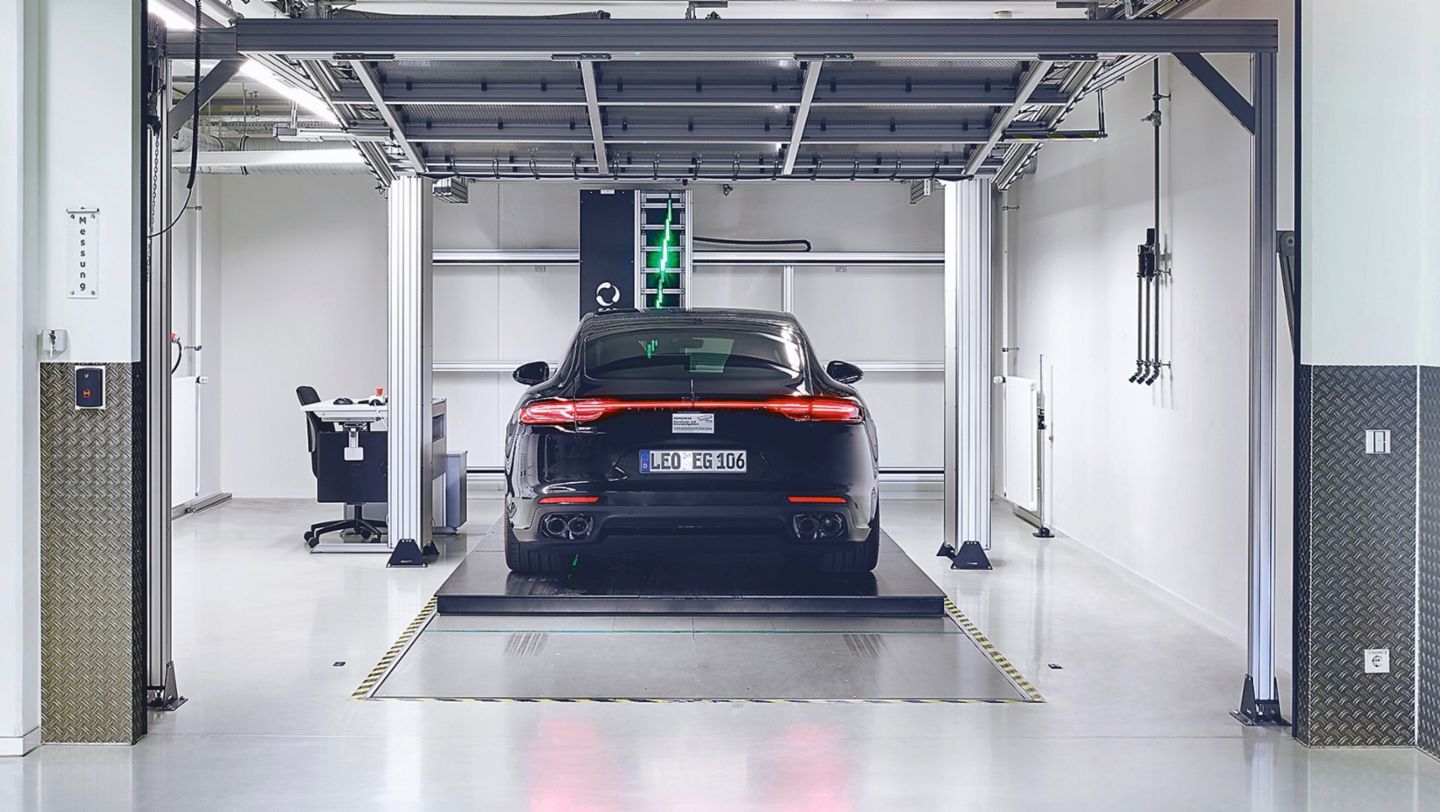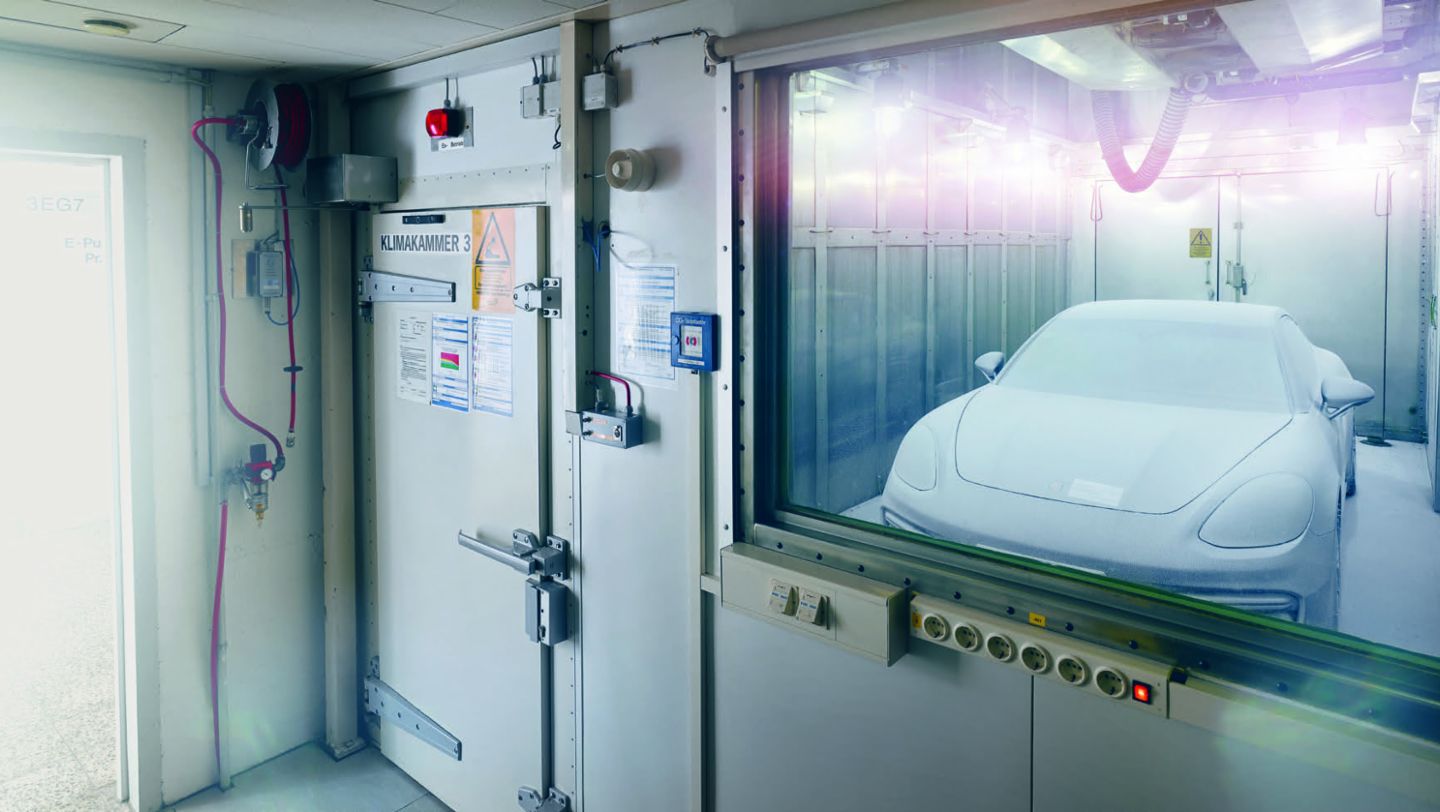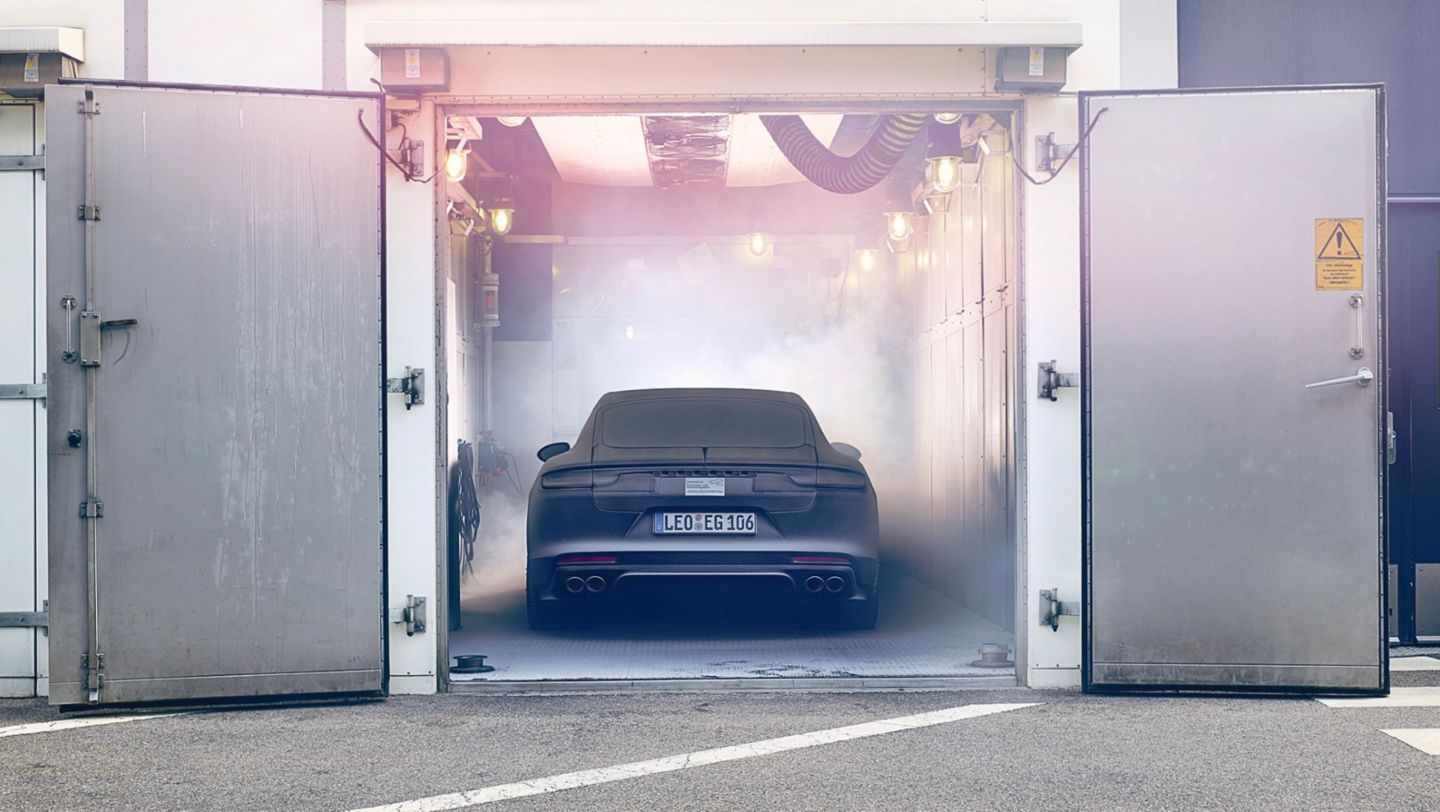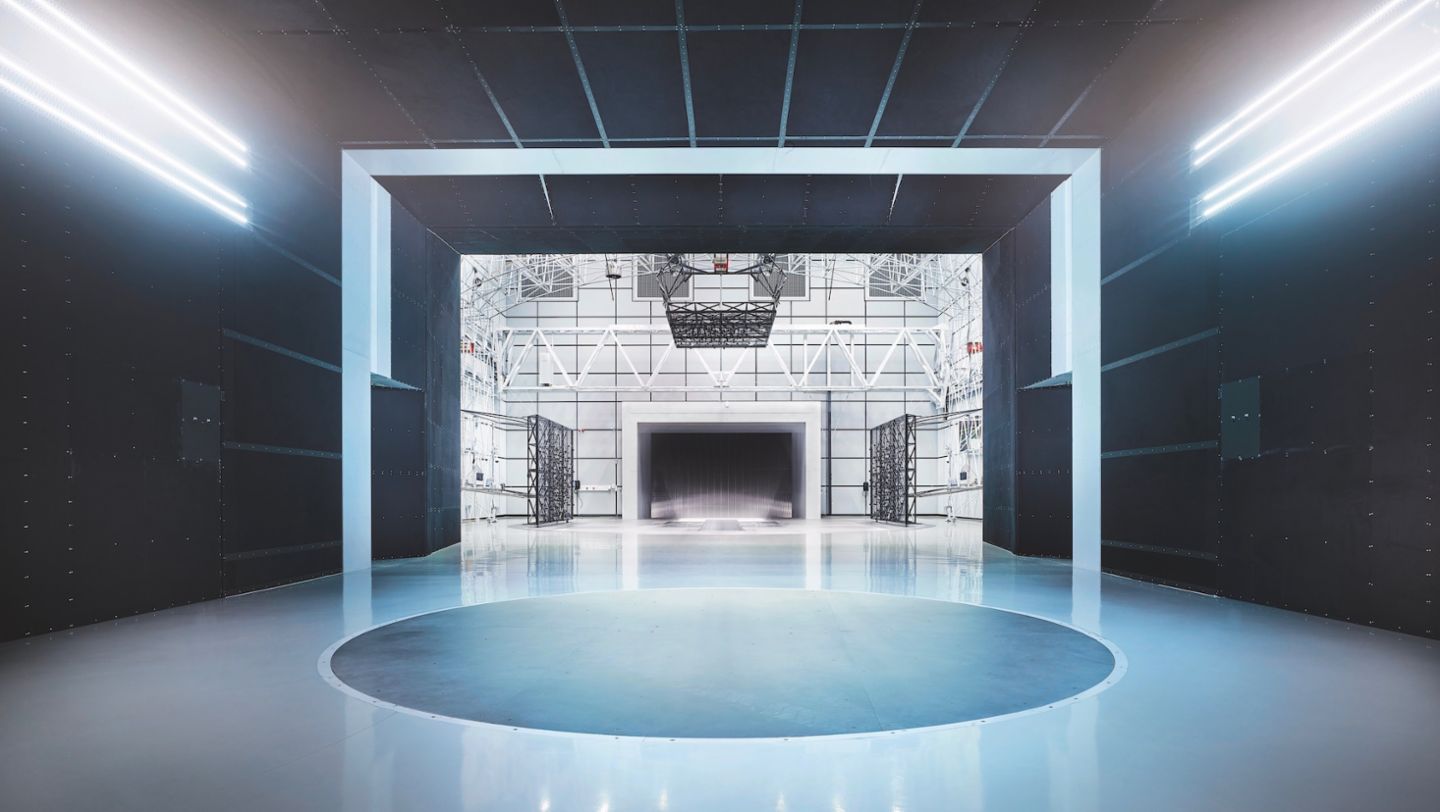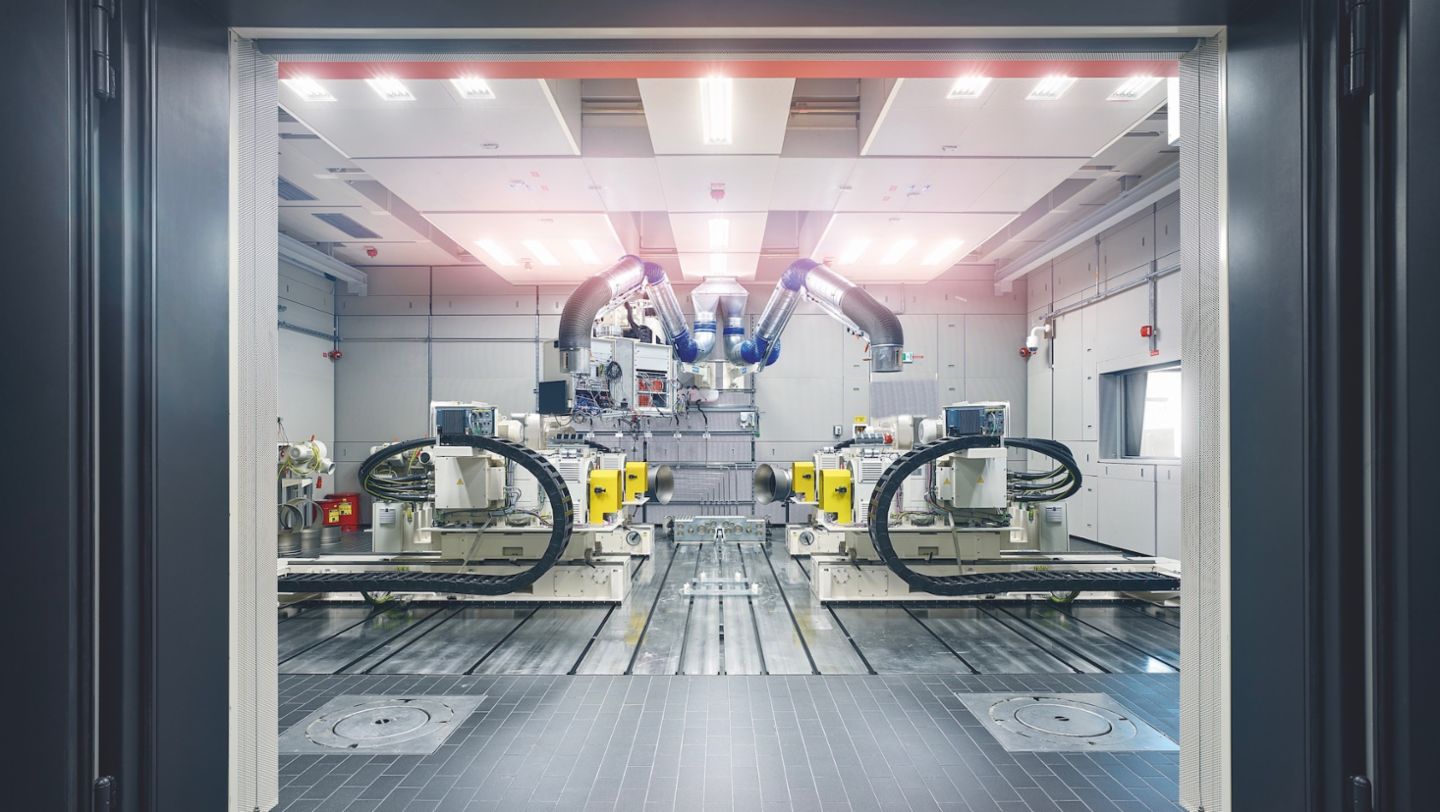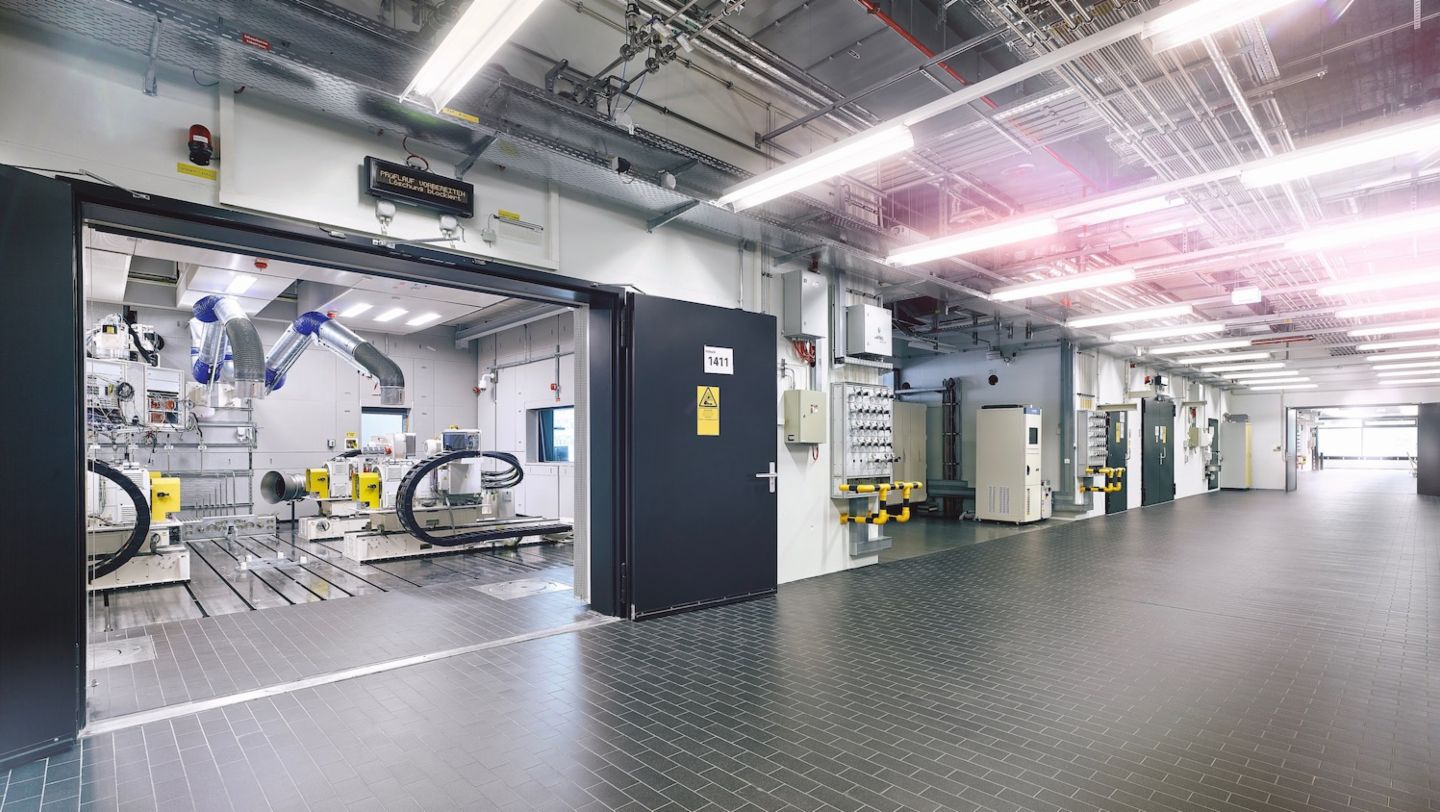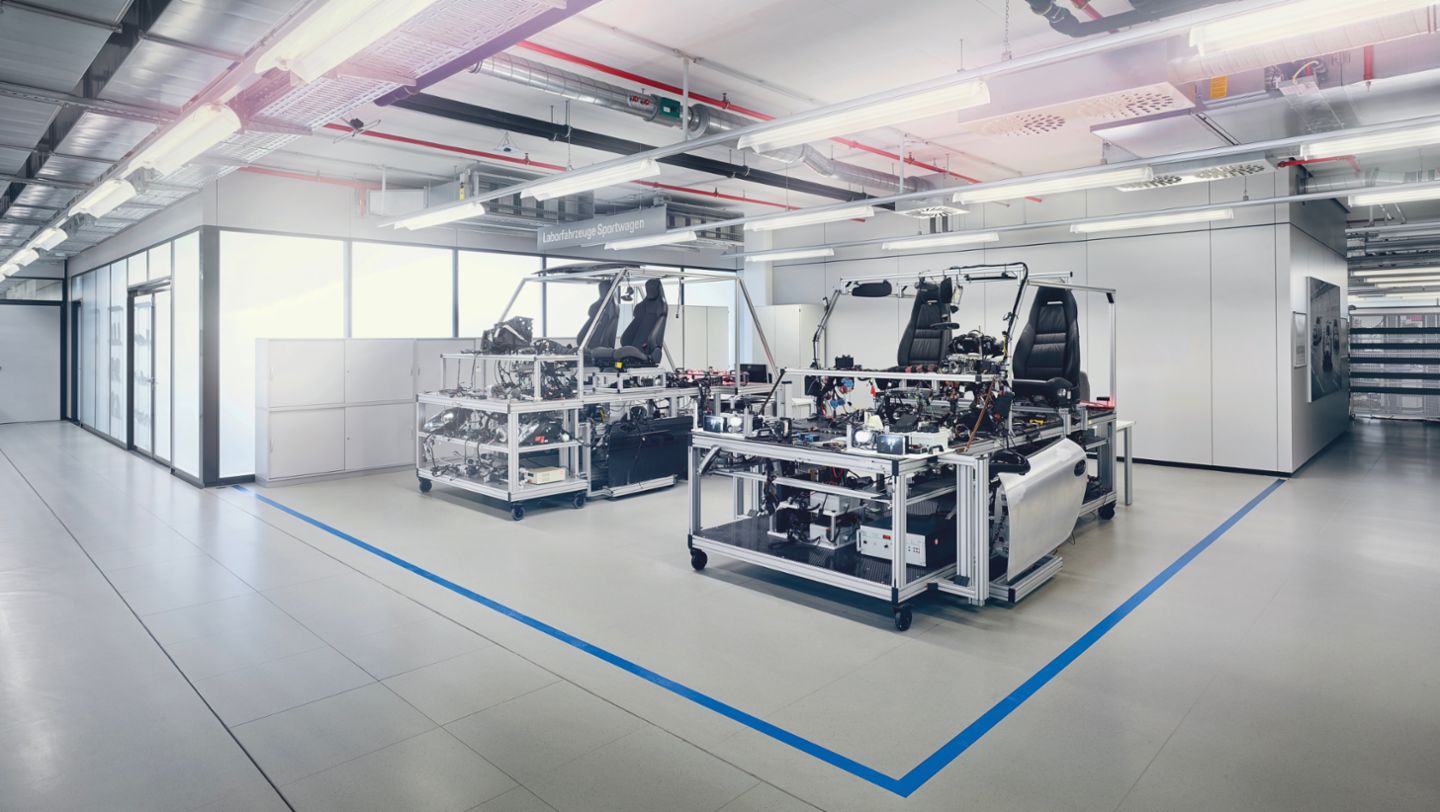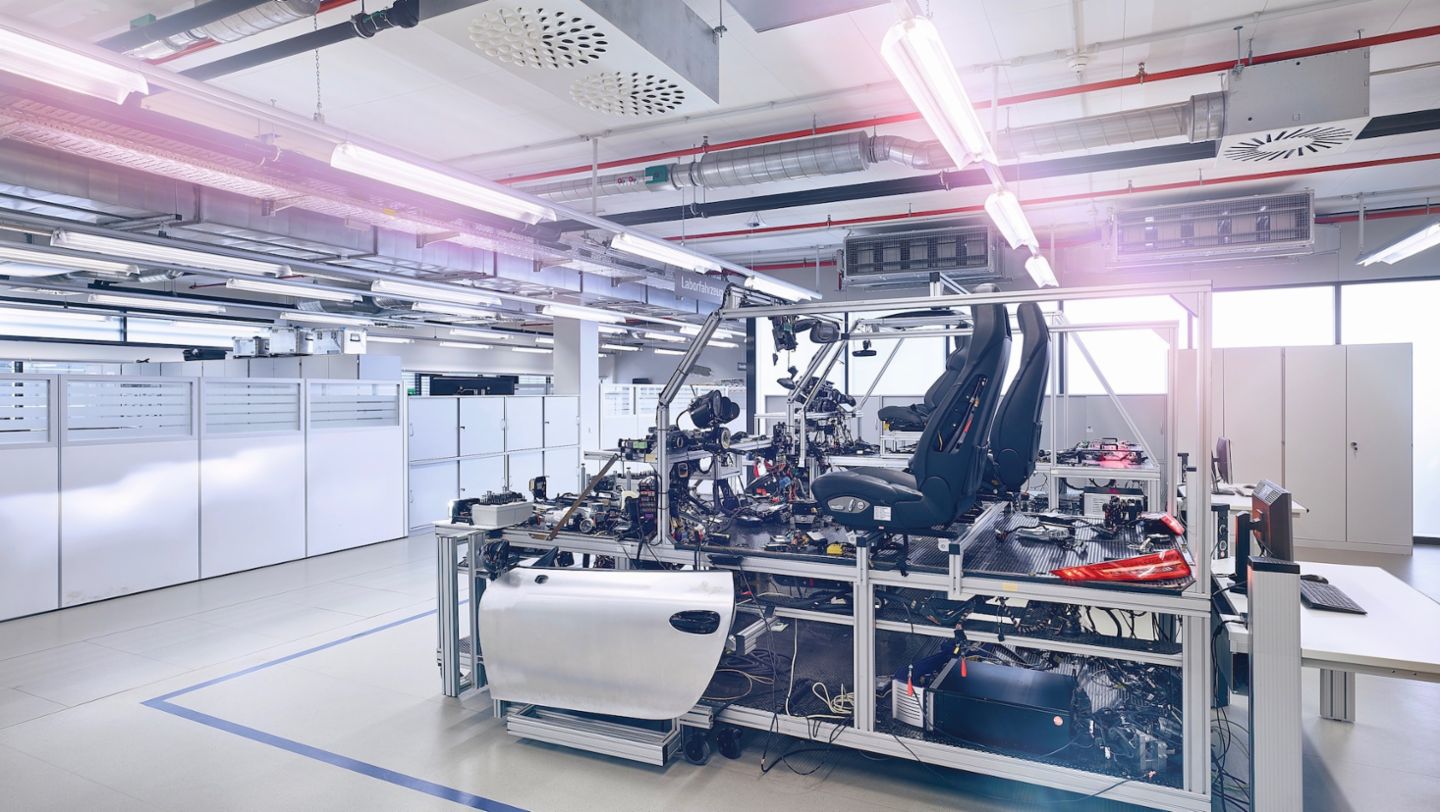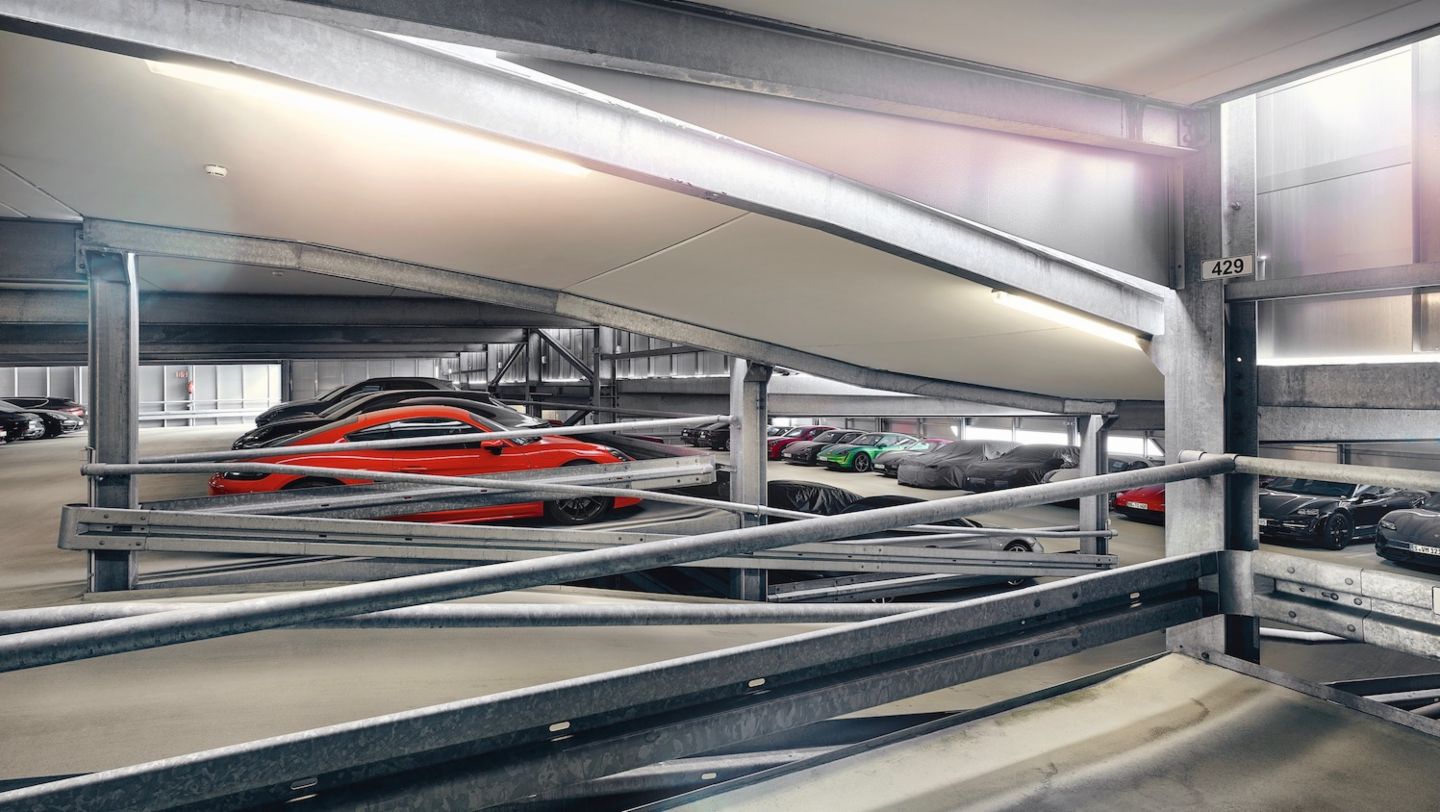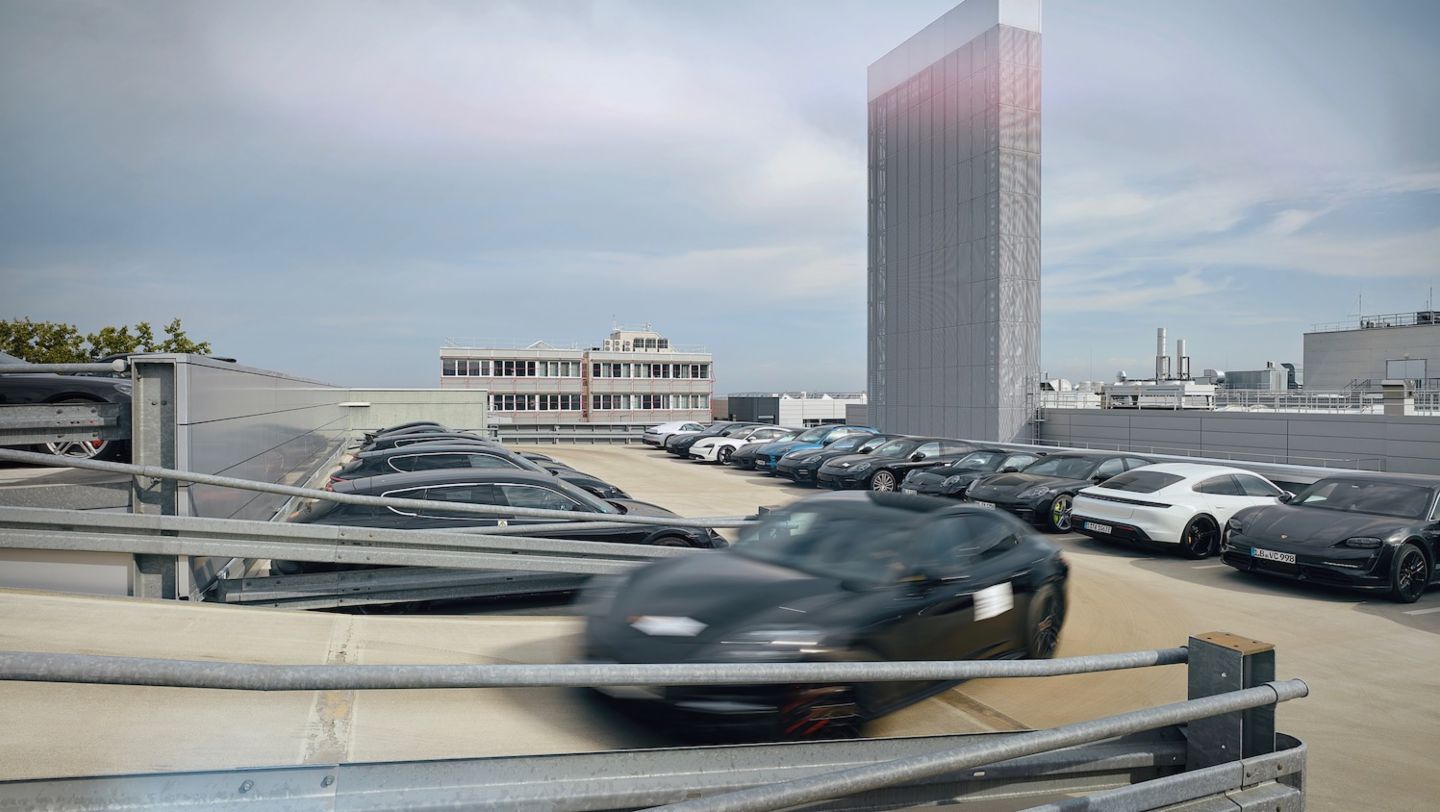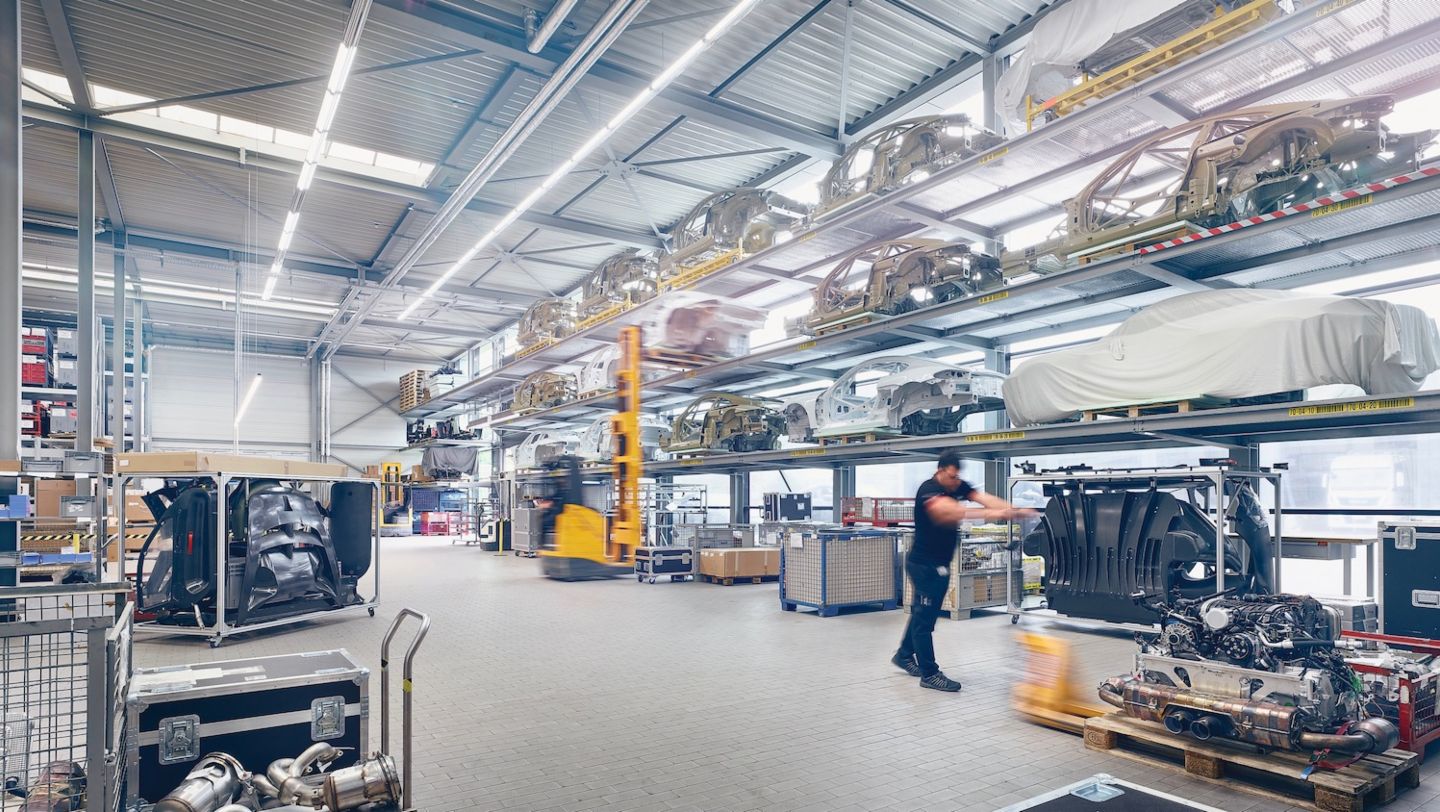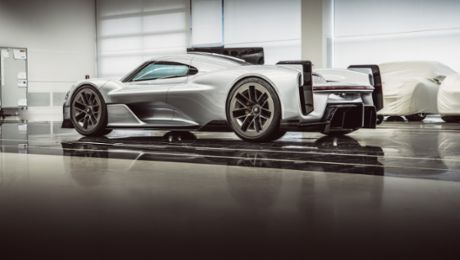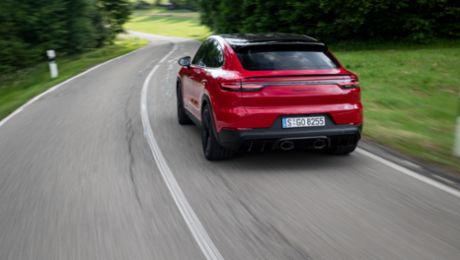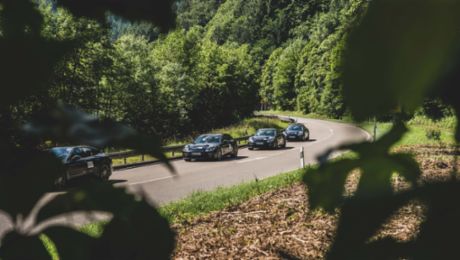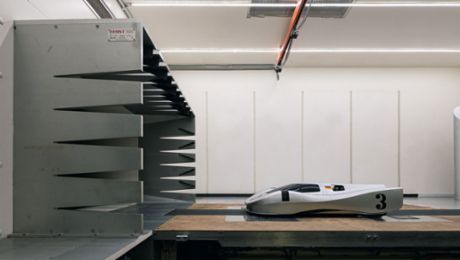Building the concept
“We make ideas tangible” is the motto of the model makers at Porsche’s Development Centre in Weissach. In the early stages of a design, when the team wants to illustrate the proportions of a future car, a variety of different plastic block materials are used. However, the first visualisation is always created out of modelling clay. From there, step by step, the ideas of the department come to life.
The remarkable thing about clay is the speed with which it can be worked. It requires a great deal of dexterity and, as the development process continues, the shape is refined. When it comes to design studies, it is quite a tricky task, because the exterior skin has a decisive effect on aerodynamics. For this reason, what are known as flow-through bodies are used before the design is finally approved. Here, joints, air intakes, wheel wells, and other details closely resemble the ultimate series state. Further development steps then follow in the adjacent wind tunnel.
Design
The task of the design team is to develop ideas and quickly advance them to the decision-making stage. Sketches, whether on paper or on a tablet, are a crucial part of the process. The two-dimensional drawing must be followed by a three-dimensional form, first with the help of design software in virtual space and ultimately as a physical model. The fact that Porsche’s designers, model makers and aerodynamics experts all sit in one building fosters both communication and confidentiality. Much more than just the body shape emerges in the design studio and the interior design ranges from the basic dimensions to the fine details of a seat seam.
Final decisions are made on the basis of physical models, which is why traditional craftspeople work in design as well. Other experts in the department devise and test what is commonly referred to as the user experience. This also includes the virtual worlds of Porsche Connect. That everything comes together in the end, from the design to the technology, the exterior to the interior, is thanks to a culture of dialogue. It is no coincidence that the chief designer’s office doesn’t have a traditional desk, but a long table at which all the disciplines can gather.
Foundry
Even among the employees in Weissach, only a few are aware that since 1971, the company has had its own foundry in Building 1, just behind the former main entrance. It happens every workday at 13:30: after a metal mixture – an alloy, as the technicians call it – has been melted, conditioned and controlled, a cast is made. The over 700 °C molten metal is poured into sand-casting moulds, which were produced using tools developed and manufactured in the in-house model shop. Sometimes it’s wash-drum-sized housings for electric motors, sometimes filigree body components that are recovered from the moulds by the foundry master and his team.
These are usually components for cars that don't even exist yet. Thanks to Porsche's own foundry, the prototypes can be tested at a very early stage of development with components that are of robust series quality in every respect. This would not be possible with a 3D printing process limited to a few materials, because the company is constantly modifying special alloys for highly stressed components. To name one example, even small variations in an alloy can have a positive effect on crash resistance without increasing the vehicle weight. With the foundry in-house, this material expertise needn’t leave the premises.
Frontal surface measurement
The wind flows perfectly around the body – the eternal objective of every aerodynamic development process. This quality is expressed by the drag coefficient, also known as the Cd value. To calculate this value from the wind tunnel measurement data, the frontal area of the vehicle must be precisely recorded.
The drag and thus the fuel or electricity consumption of a vehicle are highly dependent on the frontal area. Determining this area with a deviation of just 1.5 per mille requires a special apparatus: the frontal area measurement system, which works with the principle of a shadow theatre. A light bar generated by green light-emitting diodes slowly travels twice along the entire front of the vehicle. The contour is shown on a screen positioned behind and perfectly parallel to the vehicle. A video camera films the screen and the images are then combined into a single image on the computer. From this, an image processing programme calculates the front surface area.
Climate chamber
Whether it’s an arctic minus 40 or plus 90 degrees Celsius, as can occur inside a car parked in Arizona, the temperatures in the four climate chambers in Weissach are anything but comfortable. Yet every new sports car has to withstand these conditions in the climate-controlled room several times during the development process.
It is not only subjected to extreme temperatures, but also has to pass additional durability tests: for example, by having a technician pick up a paint spray gun and spray the windows with water after a night at 18 degrees below zero. Then the engine is left running. After a defined time, the windshield must be defrosted. Other tests focus on ensuring that the large central display is always easy to read, even at 40 degrees Celsius and in direct sunlight generated by an artificial sun. Tests also ensure that the door handles don’t jam at 40 below. In the nearby climate wind tunnel, driving at extreme temperatures, such as at the notorious Towne Pass in Death Valley (which has a gradient of around six per cent over 27 kilometres), can be simulated on a chassis dynamometer, with an experienced test bench driver behind the wheel. Electric vehicles must pass approximately the same tests as their combustion engined siblings.
Aeroacoustic wind tunnel
Realistic measurements on a secret prototype at 300 km/h – this, in extremely truncated form, was the most important requirement for the new wind tunnel, which went into operation in 2015. The key to this lies in an interchangeable belt system that moves the surface under the vehicle. This makes it possible to realistically reproduce the flow under the floor of the car and in the wheel wells. For occupants, however, it’s not just lift and downforce and drag that make the difference, but also wind noise in the vehicle. With the increasing spread of whisper-quiet electric vehicles, this is becoming even more important.
Porsche experts now devote roughly one in six measurements to aeroacoustics. To do so, a measuring field with roughly 600 microphones is mounted next to and above the vehicle, creating a kind of acoustic photograph that can be used to precisely locate the source of disturbing noises. Protruding as it does into the wind, the exterior mirror is particularly vexatious. If the optimal state has not yet been achieved, aerodynamics engineers gather in the control room with acoustics specialists, bodywork experts, ergonomics engineers, and designers to look for remedies. The experts, highly specialized men and women, operate the aeroacoustics wind tunnel and other smaller wind tunnels literally around the clock.
Drive unit testing building
More and more vehicles in Weissach are now electric. Half of the 18 test benches in the new drive unit testing building, which came online in 2019, will be used to test motors and transmissions of varying degrees of electrification. One particularly remarkable highlight is the high-voltage complete-system test bench, which was developed in-house. The entire drive unit – motors for the front and rear axles, the associated power electronics, and transmission – can be tested here together with the future high-voltage series battery. The battery is located in a climate-controlled safety capsule below the actual test bench and is put through the typical Porsche test cycles along the full performance spectrum.
Equally important is the charging behaviour, especially when it comes to taking up and releasing a lot of current very quickly. The new testing building is therefore equipped with the various charging technologies that are in use around the world. And the nine combustion engine test benches are also designed for sustainability: thanks to a flexible supply system, electricity-based CO₂-neutral fuels known as eFuels can be tested there. Porsche does not operate dedicated motorsport test benches – for employees in the testing field, having one bench testing a future series drive system while an adjacent one is testing a racing drive unit is an everyday occurrence.
Electronics integration
The ‘test house’ is not a house at all, but in fact a floor in the electronics integration centre. Nevertheless, the term is fitting. Here, under one roof, specialists test all electronics, from the power windows to the driver assistance system, to ensure perfect functionality. To make this possible at an early stage, long before the first prototype is released onto the road, developers use hardware-in-the-loop test benches. The control unit and other components, such as the headlights or steering wheel, are connected to a powerful, cabinet-sized computer. The computer confronts the control unit with what appears to be a real drive, including hazardous situations and driver reactions.
It then records exactly how the control unit reacts, for instance whether it triggers the desired function correctly and quickly enough. But that’s not enough for the perfectionists: to ascertain whether the interaction of the individual electronic components on board is working without problems, they pack all of the control units into a laboratory vehicle. While the lab vehicle doesn’t move an inch, all control units are already connected to the original wiring harness. Only if something passes muster in the test house does it move on to real-life testing.
Prototype parking garage
At last, the rubber meets the road on the long journey to production approval – prototypes see the light of day. There are currently more than 1,900 Porsche development vehicles subject to different camouflage levels and secrecy regulations. In Weissach, they are divided into three levels: unit carriers, construction stage vehicles, and pre-series vehicles. Construction stage vehicles are popularly referred to as development mules and all of the vehicles are digitally registered. The ones that require camouflage have a transponder to secure their entry into a prototype parking garage. Even employees who want to enter this trove of future treasures need an electronically verified permit.
The oldest of these parking garages is right next to the main gate of the Development Centre. It has 255 spots on eight levels, but that's not sufficient. An equally protected multi-story parking garage in the neighbouring community of Hemmingen provides an additional 120 spots. Even that is too few: a new prototype parking garage is in operation since January 2021. It has 1,150 spaces over 15 levels and approximately 400 charging points and therefore has sufficient capacity. When pre-series vehicles, the most advanced development vehicles, have completed their demanding journeys, other assignments often await them, such as use as a unit carrier for subsequent developments.
Motor sport
From ABS and aerodynamics to PDK, turbocharging and 800-volt technology, motorsport has handed down countless technologies to series development. The accelerator in racing development is the competitive pressure—measurable results in short order are essential. At the same time, the engineers benefit from the fact that their ideas do not have to be produced in large quantities. So they discover exotic materials and devise elaborate solutions.
But the company also benefits from its racing expertise in less celebrated disciplines – in logistics, for instance. With racing events taking place all around the world in rapid succession, not even a single screw can be deployed without being thoroughly vetted, so the logistics experts have set up the SAP-supported Porsche Racing System. This system records even the minutest of details – such as the data for the windshield wiper of a specific model year. Every tool for the TAG Heuer Porsche Formula E Team, replacement gearbox for a GT car, or spare parts for historic Le Mans cars can be retrieved instantaneously. From factory team racing to customer race cars, the motor sport department develops and provides support at a breathtaking clip. And series development benefits from the potential of the motor sport crew not only down the road, but often on the spot. For example, when a concept car is developed under extreme time pressure or when demanding logistics tasks need to be solved.
Info
Text first published in the Christophorus magazine, issue 397.
